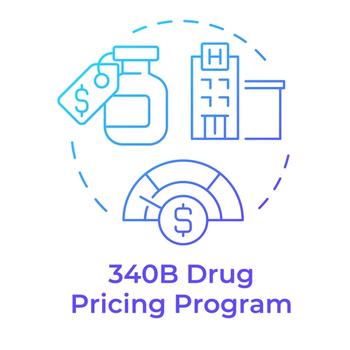
Prime Therapeutics Reviews Treatment Costs for Rare Blood Disease
Treating and managing patients with paroxysmal nocturnal hemoglobinuria is expensive and requires constant surveillance by the provider and health plan.
Patients with paroxysmal nocturnal hemoglobinuria (PNH) treated with C5 inhibitors often discontinued therapy, had breakthrough hemolysis events and blood transfusion needs, and there was an underutilization of optimal sites of care, according to a
“It is known paroxysmal nocturnal hemoglobinuria (PNH) can be a challenging disease to treat,” Patrick Gleason, Pharm.D., assistant vice president, health outcomes at Prime Therapeutics, said in an email. “C5I drug therapy requires constant surveillance by the provider and insurer due to the extreme expense, at between $300,000 to $600,000 a year or more, with potentially inadequate disease control as seeing the discontinuation rate and transfusion rate.”
PNH is a serious ultra-rare blood disorder that is characterized by the destruction of red blood cells. PNH occurs when the complement system — a part of the body’s immune system — over-responds, leading the body to attack its own red blood cells. PNH often goes unrecognized, with delays in diagnosis from one to more than five years. Patients with PNH may experience a range of symptoms, such as fatigue, difficulty swallowing, shortness of breath, abdominal pain, erectile dysfunction, dark-colored urine and anemia.
Two C5 inhibitors are available to treat PNH, both developed by Alexion Pharmaceuticals. Soliris (eculizumab) was approved in 2007 for PNH. The FDA also
Ultomiris (ravulizumab-cwvz)
During 2018 through 2019, Prime analyzed commercially insured members over a two-year period to identify individuals with PNH claims. In this analysis, 162 members were identified and divided into three categories based on treatment approach: 57 patients who received Soliris; six patients who received Ultomiris; and 99 patients with a PNH diagnosis but without a C5 inhibitor prescription claim at time of identification.
Prime assessed total treatment cost, which included medical and pharmacy benefits calculation of the actual paid amounts for all health care claims, including all medical care and drugs, after network discounts.
Prime found PNH drug therapy can exceed $1 million for an individual annually. Patients receiving Soliris had the highest total costs of care (averaging nearly $730,000 each), followed by patients receiving Ultomiris (averaging more than $370,000 each) and those with only a PNH diagnosis (averaging nearly $80,000 each).
“Optimizing PNH drug therapy is essential,” Gleason said. “This can be accomplished through ensuring the PNH drug therapy is appropriate for the individual at the time therapy is initiated through a payer’s prior authorization review. Important also is ongoing PNH drug therapy surveillance via clinical services provided by a PBM that has integrated medical and pharmacy claims analytic knowledge to automate PNH outlier drug regimen identification and specialized pharmacists who are skilled in PNH drug therapy.”
Gleason said integrated medical and pharmacy data and knowledge are required to have successful PNH drug therapy optimization conversations with the PNH drug therapy prescribers.
Other findings from the study include:
- Standard treatment of care: The mean dose for Soliris users was higher than the dose recommended by the FDA with four in 10 members.
- Transfusions: Nearly 40% of members on therapy had at least one transfusion while about 21% had four or more transfusions. A common treatment goal for PNH is to eliminate the need for transfusions.
- Breakthrough hemolysis: Another treatment goal for PNH is to eliminate breakthrough hemolysis events. One in four individuals had medical claims indicating a likely event.
- Discontinuation: Nearly 40% of Soliris users and 50% of Ultomiris users discontinued therapy within 12 months.
Newsletter
Get the latest industry news, event updates, and more from Managed healthcare Executive.





















































